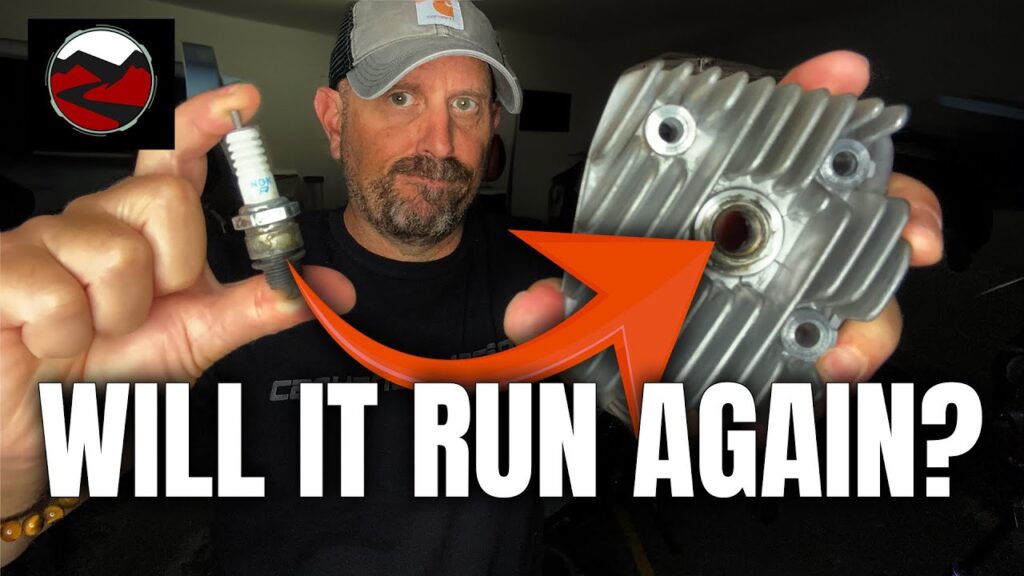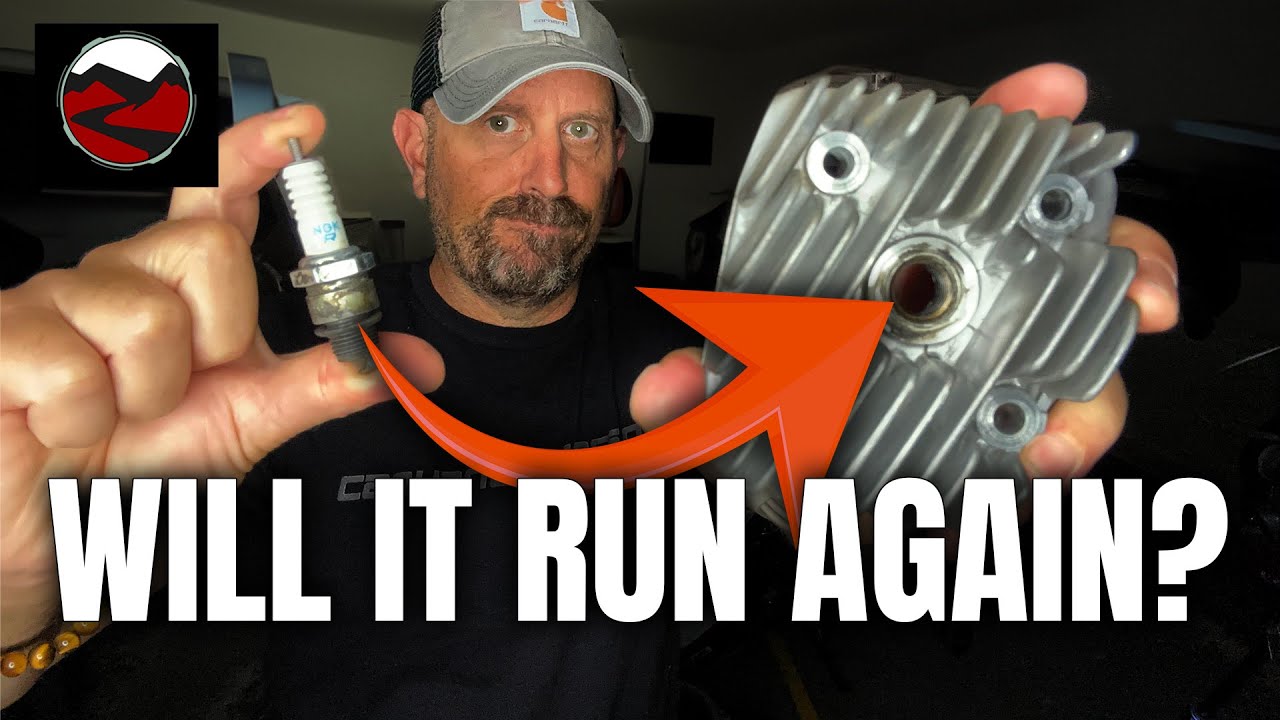
How to Fix a Stripped Spark Plug Hole: A Comprehensive Guide
Dealing with a stripped spark plug hole can be a frustrating experience for any car owner or mechanic. It’s a common issue that can lead to engine misfires, reduced performance, and potential damage to your engine. But don’t worry, it’s often fixable! This comprehensive guide will walk you through the causes of stripped spark plug holes, methods to diagnose the problem, and step-by-step instructions on how to repair them. We’ll cover everything from using thread repair kits to more advanced techniques, ensuring you have the knowledge to tackle this issue effectively.
Understanding Stripped Spark Plug Holes
A stripped spark plug hole occurs when the threads inside the cylinder head, where the spark plug screws in, are damaged or worn out. This prevents the spark plug from tightening properly, leading to a loss of compression and potential engine problems. Several factors can contribute to this issue:
- Overtightening: Applying too much torque when installing spark plugs is a primary cause. The soft aluminum of the cylinder head threads is easily damaged.
- Cross-threading: Starting the spark plug at an angle can damage the threads as you force it in.
- Corrosion: Over time, corrosion can weaken the threads, making them more susceptible to stripping.
- Improper Spark Plug Installation: Not using the correct spark plug or failing to apply anti-seize compound (in certain cases) can also contribute.
Diagnosing a Stripped Spark Plug Hole
Identifying a stripped spark plug hole early can prevent further damage. Here are common symptoms to look for:
- Difficulty Tightening: The spark plug won’t tighten properly and spins freely in the hole.
- Engine Misfires: A loss of compression can cause the engine to misfire, leading to rough idling and reduced power.
- Unusual Noises: You may hear a hissing or popping sound coming from the spark plug area.
- Visible Damage: Inspect the spark plug hole for visible signs of damaged or missing threads.
To confirm the diagnosis, you can try the following:
- Visual Inspection: Carefully examine the threads of the spark plug hole using a flashlight. Look for damaged or missing threads.
- Compression Test: Perform a compression test on the cylinder in question. A low reading indicates a loss of compression, which could be due to a stripped spark plug hole.
- Thread Chaser: Gently use a thread chaser to clean the threads. If the chaser spins freely without resistance, the threads are likely stripped.
Methods to Fix a Stripped Spark Plug Hole
Several methods can be used to repair a stripped spark plug hole, depending on the severity of the damage and your skill level. Here are some common approaches:
Thread Repair Kits
Thread repair kits are a popular and relatively straightforward solution for repairing stripped spark plug holes. These kits typically include a tap, an insertion tool, and thread inserts (also known as Heli-Coils). Here’s how to use them:
- Preparation: Remove the spark plug and clean the area around the hole to prevent debris from entering the cylinder.
- Tapping: Use the tap to create new threads in the spark plug hole. Apply cutting oil to lubricate the tap and ensure a clean cut.
- Installation: Insert the thread insert into the new threads using the insertion tool. The insert provides a new, stronger thread for the spark plug.
- Finishing: Break off the tang of the insert (if applicable) and clean the area. Install the spark plug with the correct torque specification.
Thread repair kits are a good option for minor to moderate thread damage. They are relatively inexpensive and can be used without removing the cylinder head in many cases. [See also: Choosing the Right Spark Plug]
Oversized Spark Plugs
Another option is to use an oversized spark plug. These plugs have slightly larger threads than standard spark plugs, allowing them to engage with undamaged threads further down in the spark plug hole. This method is best suited for cases where the damage is limited to the upper threads.
- Preparation: Remove the old spark plug and clean the area.
- Installation: Install the oversized spark plug with the correct torque specification. Be careful not to overtighten it.
Oversized spark plugs are a simple and quick fix, but they may not be suitable for severely stripped spark plug holes. It’s crucial to use the correct oversized plug for your engine to avoid further damage. [See also: Spark Plug Torque Specifications]
Cylinder Head Removal and Repair
For severe cases of stripped spark plug holes, the most reliable solution is to remove the cylinder head and have it professionally repaired. This involves either welding the damaged area and re-tapping the threads or installing a threaded insert using specialized equipment.
- Removal: Carefully remove the cylinder head from the engine, following the manufacturer’s instructions.
- Repair: Take the cylinder head to a reputable machine shop for repair. They will have the expertise and equipment to perform the necessary repairs.
- Reinstallation: Reinstall the cylinder head, following the manufacturer’s torque specifications and procedures.
This method is more time-consuming and expensive, but it ensures a durable and long-lasting repair. It’s recommended for cases where other methods have failed or when the damage is extensive. [See also: Cylinder Head Maintenance Tips]
Using a Back-Tap
A back-tap is a specialized tool designed to repair damaged threads from the inside out. It’s particularly useful when the damage is limited to the outer portion of the stripped spark plug hole. The back-tap is inserted through the spark plug hole and expanded to engage the undamaged threads further down. As it’s retracted, it reforms the damaged threads.
- Preparation: Remove the spark plug and thoroughly clean the spark plug hole.
- Insertion: Carefully insert the back-tap tool into the spark plug hole, ensuring it reaches the undamaged threads.
- Expansion and Retraction: Expand the back-tap to engage the undamaged threads and slowly retract it, reforming the damaged threads as it moves.
- Inspection: Inspect the repaired threads to ensure they are properly formed. You may need to repeat the process to achieve optimal results.
Using a back-tap can be a viable option for minor thread damage, but it requires careful execution to avoid further damage. [See also: Essential Automotive Tools for DIY Repairs]
Preventing Stripped Spark Plug Holes
Prevention is always better than cure. Here are some tips to help prevent stripped spark plug holes:
- Use a Torque Wrench: Always use a torque wrench to tighten spark plugs to the manufacturer’s specified torque.
- Avoid Overtightening: Overtightening is a major cause of stripped threads.
- Start Spark Plugs by Hand: Always start spark plugs by hand to avoid cross-threading.
- Apply Anti-Seize Compound: In some cases, applying a small amount of anti-seize compound to the spark plug threads can prevent corrosion and make removal easier. Consult your vehicle’s service manual for recommendations.
- Use the Correct Spark Plugs: Always use the correct spark plugs for your engine. Using the wrong spark plugs can lead to various problems, including damaged threads.
- Regular Inspection: Inspect your spark plugs regularly for signs of wear or corrosion. Replace them as needed.
Choosing the Right Repair Method
The best repair method for a stripped spark plug hole depends on the severity of the damage and your skill level. For minor damage, a thread repair kit or an oversized spark plug may be sufficient. For more severe damage, cylinder head removal and repair is the most reliable option. Consider the following factors when choosing a repair method:
- Severity of Damage: How badly damaged are the threads?
- Skill Level: Are you comfortable performing the repair yourself, or do you need to take it to a professional?
- Budget: How much are you willing to spend on the repair?
- Time: How much time do you have to complete the repair?
Tools and Materials Needed
Before starting any repair, gather the necessary tools and materials. Here’s a list of common items you may need:
- Spark plug socket
- Torque wrench
- Thread repair kit (if applicable)
- Oversized spark plug (if applicable)
- Tap and die set (if applicable)
- Cutting oil
- Anti-seize compound (if recommended)
- Wrench set
- Screwdriver set
- Pliers
- Rags
- Safety glasses
- Gloves
Step-by-Step Repair Guide Using a Thread Repair Kit
Here’s a more detailed step-by-step guide on using a thread repair kit to fix a stripped spark plug hole:
- Preparation: Disconnect the spark plug wire from the spark plug. Remove the spark plug using a spark plug socket. Clean the area around the spark plug hole to prevent debris from falling into the cylinder.
- Tapping: Insert the tap into the spark plug hole. Apply cutting oil to lubricate the tap. Gently turn the tap clockwise to create new threads. Keep the tap straight and apply even pressure. Periodically back the tap out to remove any metal shavings.
- Installation: Insert the thread insert into the insertion tool. Screw the insert into the newly tapped threads until it is flush with the surface of the cylinder head.
- Finishing: Break off the tang of the insert (if applicable) using the insertion tool. Clean the area to remove any remaining debris. Install the spark plug with the correct torque specification using a torque wrench.
- Testing: Reconnect the spark plug wire and start the engine. Listen for any unusual noises or misfires.
Conclusion
A stripped spark plug hole can be a challenging issue, but with the right knowledge and tools, it can often be repaired effectively. By understanding the causes, symptoms, and repair methods, you can take proactive steps to prevent and address this problem. Whether you choose to use a thread repair kit, an oversized spark plug, or opt for a professional repair, remember to prioritize safety and follow the manufacturer’s instructions. Addressing a stripped spark plug hole promptly can prevent further engine damage and ensure optimal performance. Remember to always use a torque wrench when installing spark plugs to avoid overtightening and potentially stripping the threads again. Regular maintenance and careful installation practices are key to preventing stripped spark plug holes and keeping your engine running smoothly.

